Scientists head to the Arctic to check 'Walrus From Space' count
- Published
- comments
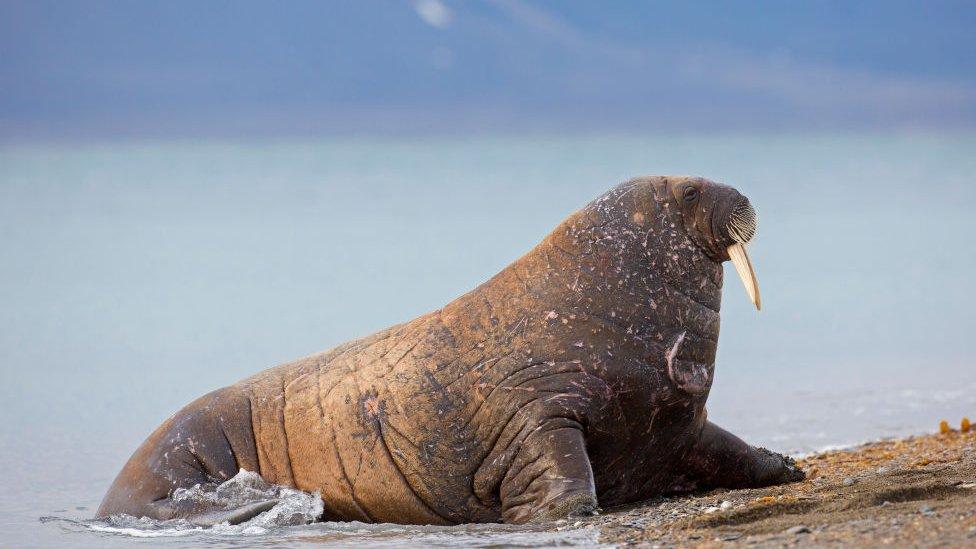
Male walrus hanging out on the beach in Svalbard, Norway
A group of scientists are heading to the Arctic to check the results of a survey counting walruses from space.
The Walrus From Space Project, launched in October 2021, asked people around the world to count the number of walruses in satellite images taken from space.
Now researchers from the British Antarctic Survey, WWF-UK and the Norwegian Polar Institute will travel to Svalbard, Norway to count the mammals and compare the results with the survey.
So far, more than 11,000 members of the public have looked at over half a million images of the Arctic, detecting walruses and giving scientists vital data on walrus populations.
The aim is to see how walruses are affected by climate change.
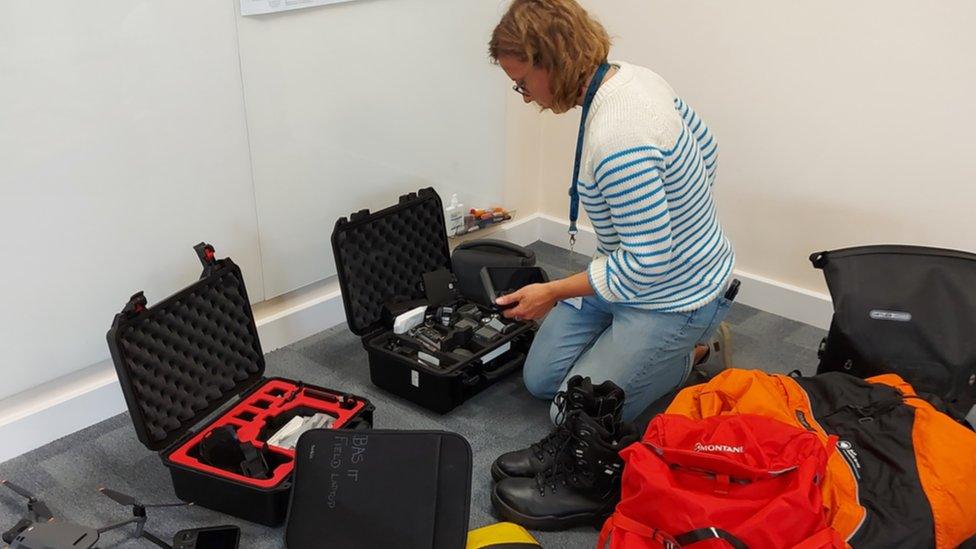
The research team will use drones to fly over groups of walruses in the Arctic
The research team will be based at a research station in Svalbard, Norway for eight days.
They will then travel by boat to walrus haul-outs - where walruses gather to rest on land - to count them by eye and by using drones.
They will then compare this count to the numbers counted from the satellite images.
Hannah Cubaynes, the Wildlife from Space research associate at British Antarctic Survey, said: "Assessing walrus populations across their whole distribution range by boats or plane is very difficult as they live in extremely remote areas.
"Satellite images can solve this problem as they can survey huge tracts of coastline to assess where walrus are and help us count the ones that we find."
If the numbers match up the scientists believe it could be an effective way to count the animals in the future.
What affect does climate change have on walruses?
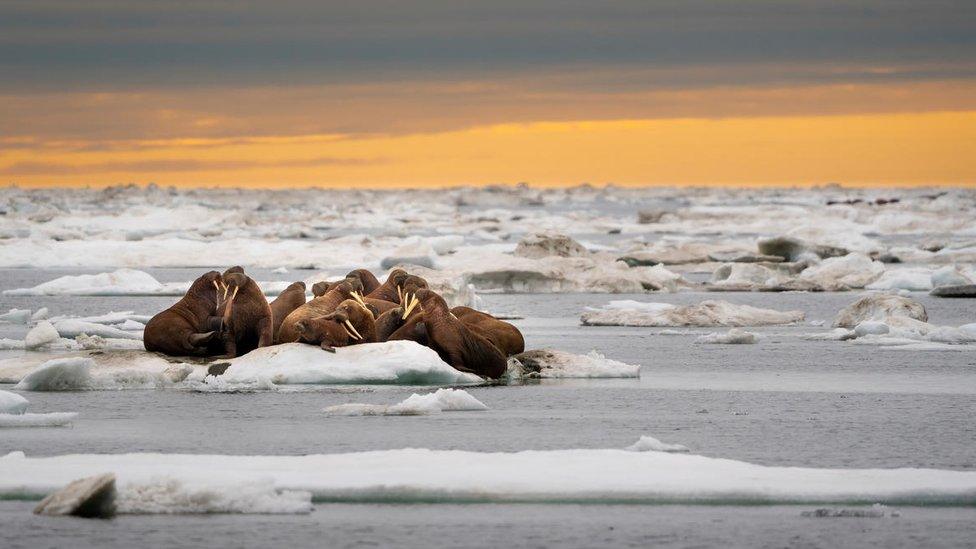
Conservationists are worried about the walrus' Arctic home which is warming almost three times faster than the rest of the world.
Walruses use sea ice for resting and to give birth to their young.
As sea ice diminishes, more walruses are forced to find somewhere to rest on land.
The British Antarctic Survey says overcrowded beaches can be dangerous for walruses as they can sometimes trample one another when frightened.
Resting on land (as opposed to sea ice) may also force walruses to swim further and use more energy to reach their food - food which in turn is being negatively impacted by the warming and acidification of the ocean.
- Published20 January 2020
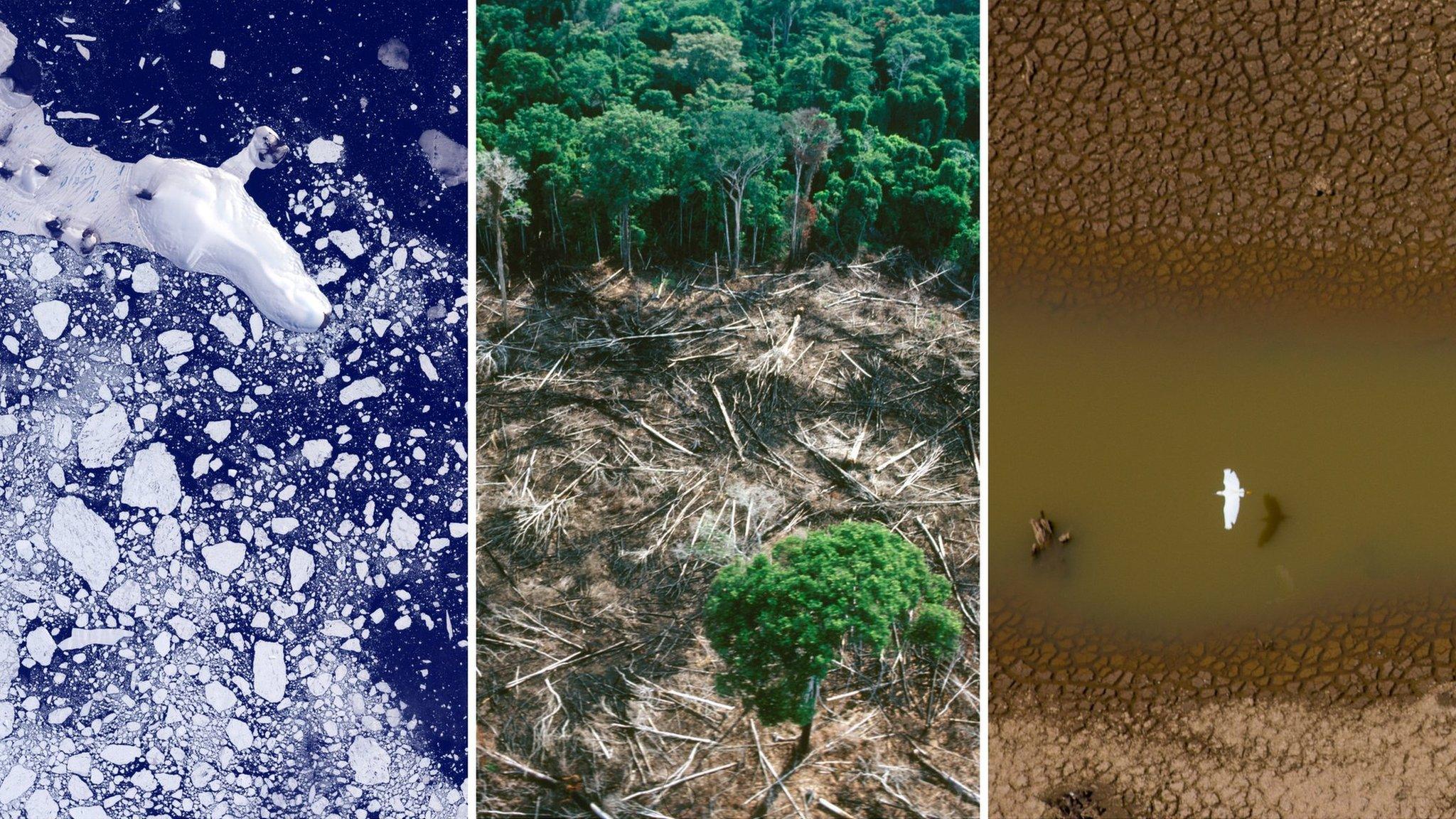
- Published13 June 2024
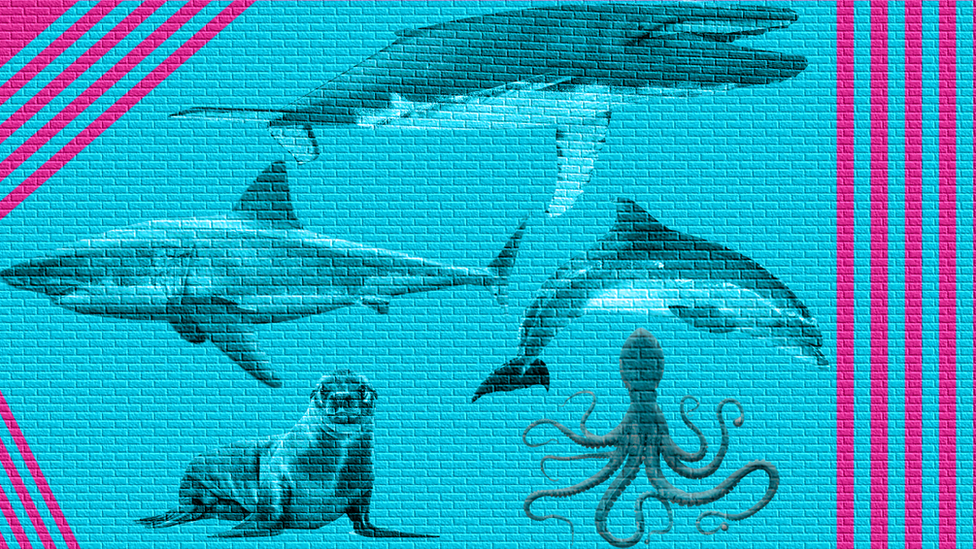
- Published11 September 2020

